With the 2020 J.League 1 season kicking-off on February 21st, Football Tribe Asia’s Krishna Sadhana took the unenviable task of predicting how the league table would look like come the end of the season. For the next three days starting from today, Krishna will give his prediction on how the J1 teams would fare in 2020, which includes relegation, cup wins, and AFC Champions League qualification.
For today, Krishna will predict the teams that will finish from 12th place to 18th place, i.e. the lower parts of mid-table all the way to the relegation places! Sit back and enjoy the predictions that may or may not come true.
DISCLAIMER: The following slideshow is an opinion piece and inevitably not all of us would agree with the predictions written here. Feel free to share your thoughts on what’s your 2020 J1 prediction through our Facebook and Twitter!
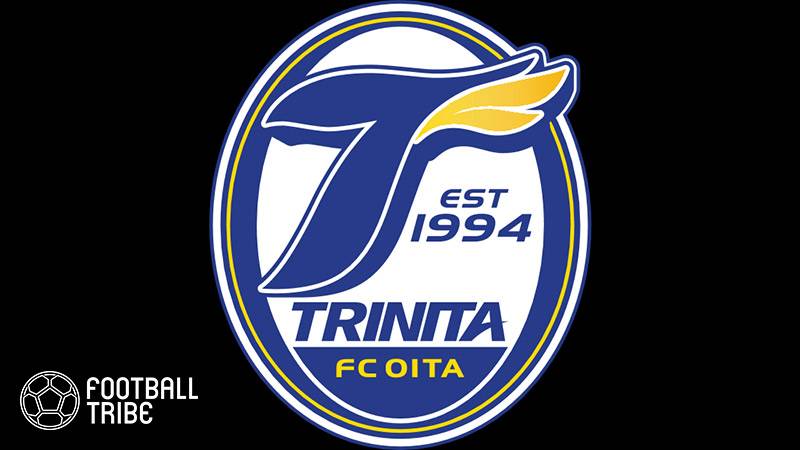
12. Oita Trinita
Oita's 9th place finish in the 2019 J1 season may be incredible considering the resources that they have right now and the fact that they were a J3 team in 2016, but remember, second-season syndrome exists. Just ask Shonan Bellmare (8th in the 2015 J1 season after promotion from the J2, 17th in the 2016 J1 season) and Omiya Ardija (5th in the 2016 J1 season after promotion from the J2, 18th in the 2017 J1 season). Oita will struggle this season considering that they have been stripped of their firepower. Noriaki Fujimoto left the Turtles to the riches of Vissel Kobe mid-way through the 2019 season, while the post-season saw Ado Onaiwu returning to Urawa Red Diamonds (and bizarrely leaving for Yokohama F. Marinos afterwards) and longtime servant Yusuke Goto making a move to Shimizu S-Pulse. Combine that with BG Pathum United deciding to use Thitiphan Puangchan a part of their 2020 Thai League 1 campaign, Ryotaro Ito and Honoya Shoji returning to their parent clubs Cerezo Osaka and Urawa respectively, and the retirement of Takuya Marutani, then you'll get a depleted Oita that would surely struggle in their second season in the top flight.
However, Oita still has Tomohiro Katanosaka, the mastermind behind their ascent, and I believe that he will once again be the driving force for Oita's stay in the J1 next season. The Turtles still have their key members in the likes of Tomoki Iwata, Yoshinori Suzuki, Rei Matsumoto, Kazushi Mitsuhira, Ryosuke Maeda and Kazuki Kozuka, players that have gelled together and grew together as a single unit underneath Katanosaka's watchful eyes. Oita's transfer market has been solid so far - Yuki Kagawa and Naoki Nomura were brought in, undoubtedly two standout performers in the 2019 J2 season who missed out on promotion with their former clubs, while Yamato Machida was brought in from relegated Matsumoto Yamaga to provide some depth. Shun Yoshida was the undisputed goalie for Thespakusatsu Gunma in the 2019 J3, contributing massively to their promotion run and he will act as a competent understudy to Oita's Shun Takagi. Replacing the outgoing Goto is Daiki Watari, a solid striker from Sanfrecce Hiroshima who had experience in the AFC Champions League but sadly didn't receive that many minutes on the field that he deserves. And last but not least is Kei Chinen - a like-for-like replacement for Onaiwu, Chinen's highly coveted by the Kawasaki Frontale management and his loan move to Oita would provide the talented youngster with some valuable minutes and opportunity to grow as an asset.
Overall, Oita will struggle in 2020. They won't reach the heights of 2019 and the threat of relegation would give them a scare here and there as second-season syndrome kicks in. However, Kataonsaka and his men will prevail against all odds again and a comfortable mid-table finish should be good enough for them, considering that Oita's resources aren't as massive as their top-flight rivals. Oita are a team that's constantly growing and it's a matter of time that they'll have the might to go toe-to-toe with the J1's elite. But for now, it's time to brave through the second-season syndrome and solidify themselves as a proper mid-table side first.
Last season: 9th
Player to watch: Tomoki Iwata. The defender had mature quite significantly under Katanosaka, earning himself a call from Japan national team head coach Hajime Moriyasu to represent the country in the 2019 Copa America. His partnership with Yuto Misao helped Oita to concede only 35 goals in the 2019 season - by contrast, league champions Yokohama conceded 38 goals en route to the title. The vultures of the top flight will surely be circling over the Showa Denko Dome for Iwata's signature, and it's up to the club's higher-ups to keep their most prized talent away from prying hands.
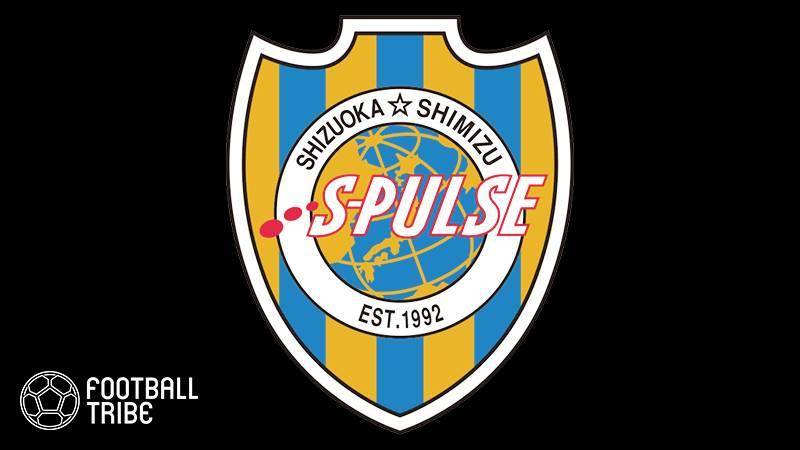
13. Shimizu S-Pulse
The orange side of Shizuoka Prefecture had a torrid 2019, finishing 12th on the table after being involved in a tense relegation dogfight. They avoided the trapdoor in the final stretches of the season and would be relieved that they didn't end up like prefectural rivals Jubilo Iwata that went head-first into J2. Shimizu's top-flight survival was down to the exploits of Douglas, with the Brazilian striker scoring 14 times for his team and etching himself as the 3rd most productive player of the 2019 J1 season, just tailing behind joint-winners Teruhito Nakagawa and Marcos Junior of Yokohama.
However, the 2020 season would see Shimizu being deprived of their deadliest player as Vissel came in and snatched Douglas away from Shizuoka Prefecture as a replacement for the retiring David Villa and the outgoing Lukas Podolski. But, to the relief of Shimizu fans everywhere, the club has stepped in and acquired two players who will hopefully fill in Douglas' massive boots.
Thai international Teerasil Dangda and Yusuke Goto are two decent strikers that should form a decent partnership up-front for Shimizu. Teerasil had prior experience in the J1 before, a loan stint with Sanfrecce in 2018 that saw him made 32 appearances and score 6 times. Goto's exploits with Oita are quite incredible - the man won Oita the 2016 J3 title and played a significant part in the Kyushu's side ascent as of late. The duo are expected to form the focal point of Shimizu's attack in 2020, a trio if one includes Brazilian Junior Dutra into the equation. Kenta Nishizawa and Yosuke Kawai are also still at Shimizu and they would provide some great options from the flanks.
Sure, Shimizu will have to endure another season of struggle but besides the absence of Douglas, defenders Hiroshi Futami (V-Varen Nagasaki) and Ko Matsubara (Sint-Truiden of Belgium) and midfielder Jumpei Kusukami (released), the orange side of Shizuoka have retained a good bulk of their squad from 2019. And leading them all is a new head coach - Australian Peter Cklamovski, who was Ange Postecoglou's number two for seven years. Cklamovski had helped Ange out at Melbourne Victory, the Australia national team, and Yokohama, and it is hoped that he had learned a thing or two from Ange as he took over a Shimizu side that's bracing themselves for yet another tough year in the top-flight. However, despite their inevitable struggles, I believe that Cklamovski would utilize Dangda, Goto, and the other players in his disposal well enough for another stint in the J1. This will be Cklamovski's first-ever head coach role after years of being number two and 2020 will become his baptism of fire. Will he made the successful transition from assistant coach to head coach or will he become the J1 version of Paul Clement and fail spectacularly? Who knows.
Last season: 12th
Player to watch: Teerasil Dangda, who else. The Thai international was impressive with Sanfrecce during his 2018 loan stint and with Shimizu he's expected to replicate that performance and more as he steps into Douglas' massive boots. Thai players have been quite impressive in the J.League as of late no thanks to the successes made by both Chanathip Songkrasin and Theerathon Bunmathan, and much is expected from Teerasil as he aims to follow his compatriots' footsteps. Will Teerasil flourish in Shizuoka Prefecture or will he crumble underneath the pressure of replacing Douglas and replicating the successes of Chanathip and Theerathon? Only time will tell.
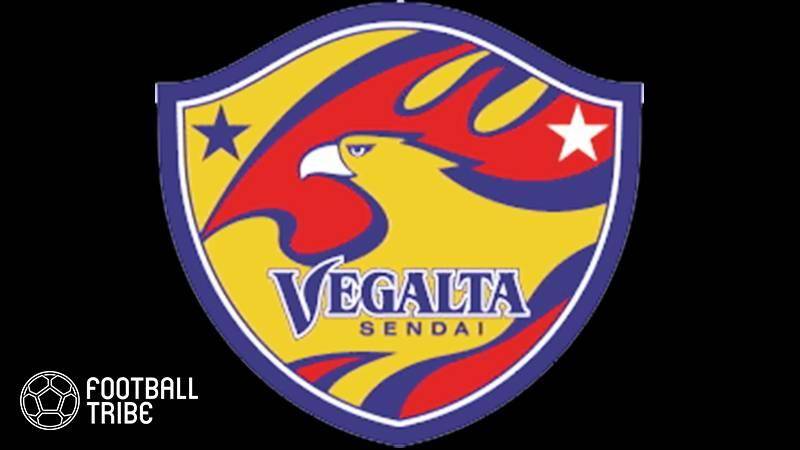
14. Vegalta Sendai
Let's be honest, Vegalta didn't have the most remarkable of 2019. Sure they were dragged into the relegation battle but they did well to calmly steer away from it with a solid 11th place finish. I'm predicting more of the same from the men in yellow this time out in 2020, but in a slightly worse position considering they've lost Ramon Lopes, who went to the Middle East with Khor Fakkan, and Shun Nagasawa, who's out injured.
Vegalta, however, decided to bring in three interesting signings to bolster the squad - Brazilian Para, Portuguese Alexandre Guedes, and Spaniard Isaac Cuenca. Brought in from Brazilian second-tier side Botafogo SP (unfortunately, not the same Botafogo that has just signed Keisuke Hond, that's Botafogo CR), Para has been capped once by the Brazilian U-20 national team and at 24 years of age, the defender still has room to grow and much to learn. Meanwhile, both Alexandre and Cuenca had experience with European clubs before. Alexandre was brought in on loan from Portuguese Primeria Liga side Vitoria de Guimares, for whom the striker has made 31 appearances and scored 7 goals since 2018. The 25-year old (who, interestingly enough, is celebrating his birthday on the day this article is published, so happy birthday to him!) has been rarely given the nod at the Estadio D. Afonso Henriques and it is hoped that a move to the Yurtec Stadium in Sendai would provide Alexandre with some valuable playing time. Last but not least, there's no need to introduce Cuenca anymore - FC Barcelona graduate, represented Ajax, Deportivo La Coruna, Bursaspor, and Hapoel Be'er Sheva among others, and he already has J1 experience, having played for Sagan Tosu in the 2019 season. The winger will surely add more spark to the Vegalta attack after the departure of Ramon Lopes.
Like Shimizu, Vegalta also has a new man at the helm - Takashi Kiyama. He had overseen the growth of J2 clubs Ehime FC and Montedio Yamagata, and the Vegalta management is hoping that he would guide the team from Sendai to a decent finish in the 2020 season. It's going to be a challenging task, especially as Kiyama is taking over from long-time head coach Susumu Watanabe, a man who had become synonymous with Vegalta.
Last season: 11th
Player to watch: Isaac Cuenca. He had been one of the shining lights of Sagan Tosu's torrid 2019 season and it is hoped that he could bring that experience of duking it out against the big boys in Europe to Vegalta. I don't think the same challenges that inhibit Cuenca at Tosu will affect him this time out, so expect him to become Vegalta's ace in 2020.
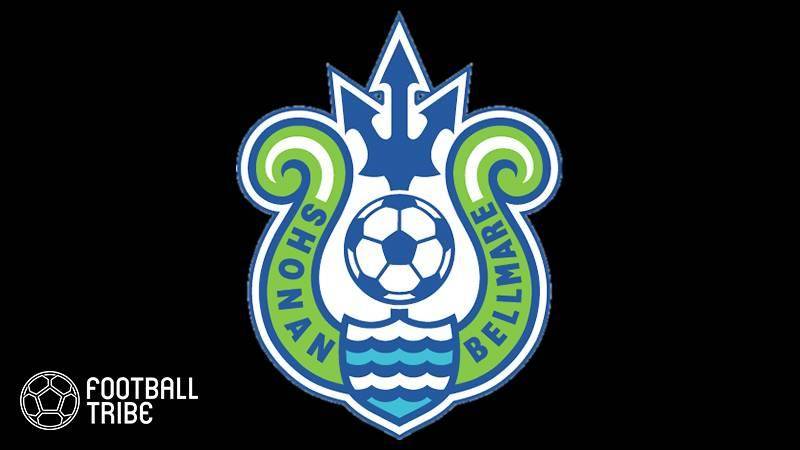
15. Shonan Bellmare
Shonan are a decent team, full stop. They deserve to finish at least mid-table ever since their arrival back in the top flight in 2018. Heck, their return to the J1 coincided with a J.League Cup title! However, the Shonan of 2019 shows how much that events off the field could affect a team on the field. The Hiratsuka club was rocked by controversy after their long-time head coach, Cho Kwi-jea, was implicated in a power harassment scandal. The South Korean was accused of verbally and physically abusing both his players and the Shonan staff, and after a suspension, he subsequently left the club. Sure, the Shonan higher-ups handled the scandal well and professionally, but it affected the players severely on the pitch. They were winless in 11 matches, an atrocious run that started in August and ended in December. Finishing 2019 in 16th place, Shonan were also very fortunate to avoid relegation after drawing 1-1 against J2 side Tokushima Vortis in the relegation/promotion play-off, salvaging their top-flight position by the skin of their teeth thanks to the play-off's regulations that played in favor of the J1 team in case of a draw (I know, it's ridiculous). But at least Bin Ukishima has steadied the ship...kinda.
I was tempted to put Shonan back in the relegation/promotion play-off place again for 2020, heck even relegation to J2! But one of their signings immediately caught my eye - Norwegian international striker Tarik Elyounoussi. The man was decent for AIK in the Swedish Allsvenskan, scoring 19 times in 52 appearances and winning the 2018 Allsvenskan title in the process. He also had experience with the European elite, representing Greek giants Olympiakos and German Bundesliga side TSG 1899 Hoffenheim throughout his career. And don't get me started with his exploits in Norwegian football. Sure he doesn't score that many goals but Tarik was considered as one of the greatest talents produced by Frederikstad FK, his first professional club. Even Premier League clubs were pining for his signature in 2008!
So, Bin, I don't know if you can read this, but hear me out. Your team is lucky to have a man of Tarik's talents in your squad. Sure he might be not that good by European standards but here in the J.League, with the right amount of tactics you'll be a world-beater. Treat him well. Make him your ace. Build your team around him as the attacking focal point. However, the most important thing that you should do to Shonan doesn't involve Tarik at all. Fix your team's morale. They've gone through a lot in 2019. Make sure that 2020 is a fresh new start for your lads. That way, the disaster of 2019 won't repeat itself on the pitch and you might secure yourself another year in the J1.
Last season: 16th (survived relegation play-off)
Player to watch: Tarik Elyounoussi. Do I need to explain again?

16. Nagoya Grampus (survive relegation play-off)
Sure, Japanese football geeks may consider Nagoya as one of the big boys of the J.League, alongside the likes of Kashima Antlers, Kawasaki Frontale, Urawa, Yokohama, Sanfrecce, and more. But let's get real here. Nagoya has been poor since their return to the top flight in 2018. They barely avoided the dreaded play-offs in 2018, finishing 15th, and though they've improved their finish to 13th in 2019, they were fighting for their lives during the latter part of the season. Nagoya only finished that high up the table by virtue of their impressive performances during the start of the 2019 season.
Nagoya's decline during the 2019 season saw Yahiro Kazama losing his job and 2020 will be the first full-season of Italian tactician Massimo Ficcadenti, formerly of Cagliari, FC Tokyo, and Sagan Tosu. Ficcadenti had done well to steer Nagoya away from relegation problems last time out, however, I'm predicting that those problems won't go away that easily and they will return in 2020. Ryuji Izumi has left for Kashima, while Shuhei Akasaki has returned to his parent club Kawasaki. Making things more complicated, Aria Jasuru Hasegawa is out until July thanks to a fractured tibia. However, to Ficcadenti's relief, Naoki Maeda is still hanging around, as well as Brazilian striker Jo.
I'm predicting former Manchester City man Jo to be Nagoya's focal point of attack in 2020, with the team's wings being reinforced by the return of Matheus from his loan spell at Yokohama. Matheus scored once and played 11 times for Yokohama as he helped the Kanagawa side to the 2019 J1 title, and he should bring what he had learned underneath Ange Postecoglou to a Nagoya side desperate for inspiration. Other notable additions are Hiroyuki Abe from Kawasaki to reinforce the Nagoya midfield, while Ryogo Yamasaki was brought in from Shonan to give Ficcadenti more options up-front.
But in the end, consistency has been Nagoya's biggest problem since their promotion back to J1 in 2018 and I can see it repeating itself again in 2020. These inconsistencies will eventually drag Nagoya into the relegation mix, but they should have that amount of quality in them to overcome the relegation play-off should they finish there (which again, having the play-off biased towards the J1 team in case of a draw is something that I find utterly ridiculous).
Last season: 13th
Player to watch: Jo. The former Manchester City player will spearhead the Nagoya attack this season and fans are expected to see him banging it in for the Toyota-backed team week in week out. Last season's top scorer for Nagoya, Naoki Maeda, deserves a shoutout here too. Should any of these two are absent due to injury or suspension, expect tough times for Nagoya.
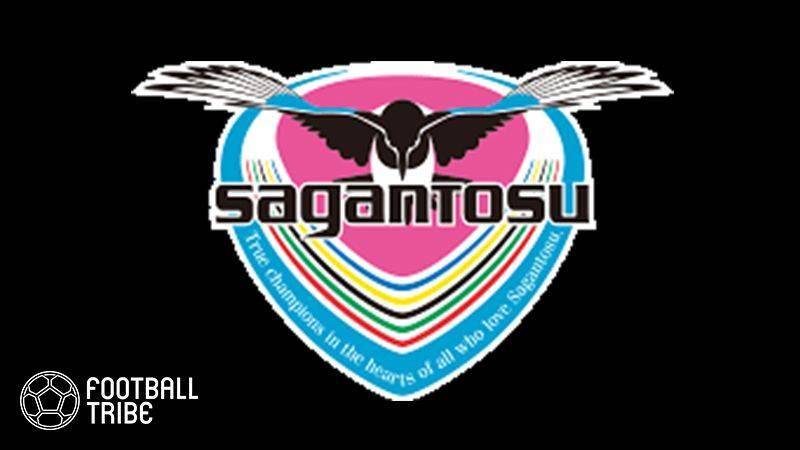
17. Sagan Tosu (relegated)
2020 might see the end of Sagan Tosu's tenure in the J1. I'm sorry, but this team has been the Houdini of the J1 as of late, escaping the dreaded jaws of relegation since 2018. But you know, as they say, someone's luck will eventually run out and I get this dreaded feeling that this year's the year that Sagan's luck will finally meet its end. Ever since their promotion to the J1 in 2012, Sagan has proven themselves as the top dogs of Kyushu in the top-flight, with the likes of Oita, arch-rivals Avispa Fukuoka, and V-Varen Nagasaki going in and out of the J1 during their tenure. However, Oita's return in 2019 saw the Turtles took the title of Kyushu's best from the Magpies (or Japanese white-eye? Whatever bird it is on Sagan's crest) as Oita finished 9th, way above of Sagan who could only muster a 15th place finish.
The biggest problem with Sagan as of late? Severe mismanagement. The firing of Yoon Jung-hwan from the position of head coach in 2014 was one of the biggest mistakes that the Sagan management has done, as they were flying high on top of the J1 table at that time only to slump 5th after Yoon was replaced with Megumu Yoshida. But that was soon eclipsed by their inability to finance their ambitions.
Around 2018, both Sagan and Vissel decided to challenge the hegemony of the J1 by assembling a squad of superstars. But unlike Vissel, who actually have the finances needed to fund such ambitions thanks to their owners Rakuten, Sagan lacked the sustainability needed to finance their ambitious project. FIFA Career Mode legend Victor Ibarbo became the first notable name to arrive at the Ekimae Real Estate Stadium, before a number of other notable names made themselves known - former Kashima attacker Mu Kanazaki, former Atletico Madrid and Chelsea striker Fernando Torres, and the aforementioned Isaac Cuenca. Torres' arrival in Sagan was greeted with much fanfare, so much so that Ibarbo was loaned out to V-Varen to accommodate the Spain legend.
However, things soon fall apart. Torres' time with Sagan was riddled with injuries and lack of form, and his contract with the club, coupled with a "messy break-up" between Sagan and former head coach Massimo Ficcadenti, soon put a huge strain on Sagan's finances. During their "Galacticos" era (so to speak), Sagan had failed to challenge for the top half of the table, spending their time battling (and escaping) the threat of relegation. And as the 2020 season approaches, Sagan's "Galacticos" era is well and truly finished before it even started. Torres has retired, while Ibarbo was signed permanently by V-Varen. Cuenca went to Vegalta, while DHC, Sagan's long-time sponsors, decided to pull out their support, leaving Saga Shimbun to take over the cosmetics giant's place as Sagan's main sponsors. Moreover, Takeshita Seika, a confectionary company renowned for its "Black Mountain" ice cream (I'm eating one right now), is also funding the team through a "crowdfunding" scheme that saw the company selling limited-edition Sagan-themed products to the public - which, is not a good sign.
2020 might see the end of Sagan Tosu in the top flight as we know it.
Last season: 15th
Player to watch: Mu Kanazaki. According to Transfermarkt, he's still a Sagan player and the former Kashima Antlers ace will have to do anything he can if he wants to lead his team in their inevitable battle against relegation. Kanazaki has shown flashes of brilliance in a Sagan shirt and he's easily one of the hardest working players for the Kyushu-based side, however, he's now a shadow of his Kashima self.
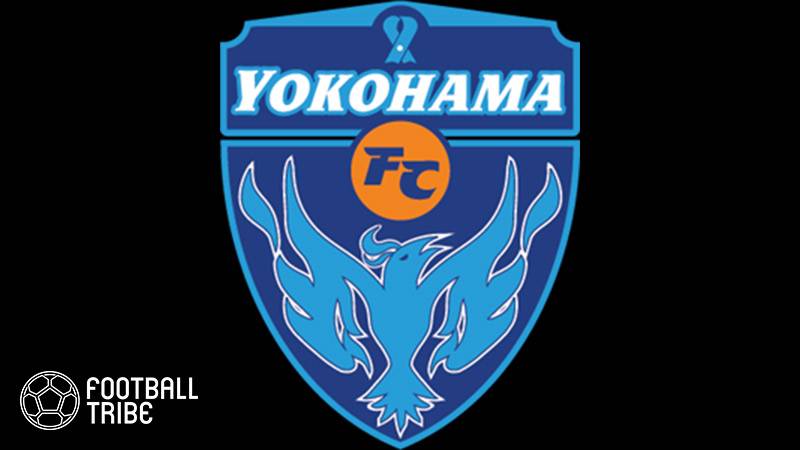
18. Yokohama FC (relegated)
It's like an unwritten rule in football - there should be at least one newly promoted side that ends up going straight back down to the second-tier after a season in the top flight. And for me, that team's going to be Yokohama FC. Formed by fans of Yokohama Flugels after their club was absorbed into the behemoth that is Yokohama F. Marinos, Yokohama FC has become somewhat of a retirement home for former J.League stars. Sure the average age of their squad is 28.4 years old, but head coach Takahiro Shimotaira can actually form a starting lineup consisting of players who are over the age of 30. And the average age of that squad? A staggering 36.5 years old. Good lord.
Sure, having loads of experience would be beneficial for the younger crop of players in the long run. But one must always remember - the pace of the top flight is drastically different than that of the second division. There will be a point somewhere in the future that these senators will be unable to catch up with the fast-paced nature of the J1. Yes, Japanese football supporters still adore and respect these aged players, and I have to admire them for showing such levels of adoration that might be absent from the game nowadays. Other Japanese teams still have their own senators, such as Yasuhito Endo at Gamba Osaka and Kengo Nakamura at Kawasaki Frontale and they have shown us that they can still do it on the pitch. However a perfect balance between the young and the old is needed and unfortunately for Yokohama FC, their old outnumber the young and I think that Yokohama FC's young might struggle to step into their counterparts' shoes when the time needs them to rise up.
As for the head coach, you can say that Shimotaira is quite hot-and-cold. He qualified Kashiwa Reysol to the 2018 AFC Champions League after a 4th placed finish in 2017. He was also the one who started driving Kashiwa into a ditch in the 2018 J1 season, something that Kashiwa never really recovered from and ended in relegation. Cue one year later and he brought Yokohama FC back into the top flight after a 13-year absence.
In the end, I'm predicting a swift return to the J2 for Yokohama FC, but not after we the fans are allowed to see the likes of Shunsuke Nakamura, Daisuke Matsui, Ibba Laajab, or even the King himself, Kazuyoshi Miura (who, at 52, is older than the head coach himself as Shimotaira is 48 right now) gracing the pitch and showing their stuff.
Last season: 2nd (J2)
Player to watch: Shunsuke Nakamura. The Celtic legend is well-renowned for his killer free-kicks and defenders in the J1 should be wary whenever Yokohama FC are awarded one. At 41 years of age, Nakamura's one of the oldest players of the Yokohama FC squad, second only to 52-year old King Kazu. But fans everywhere are crossing their fingers and hoping that the veteran has aged like fine wine and still has the skills from his youth.


